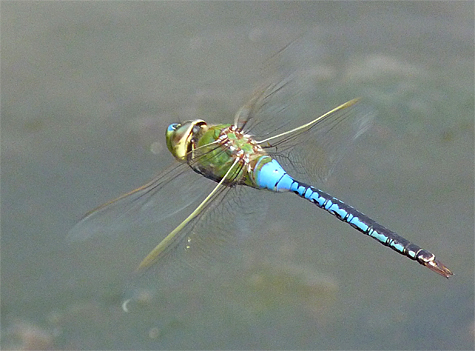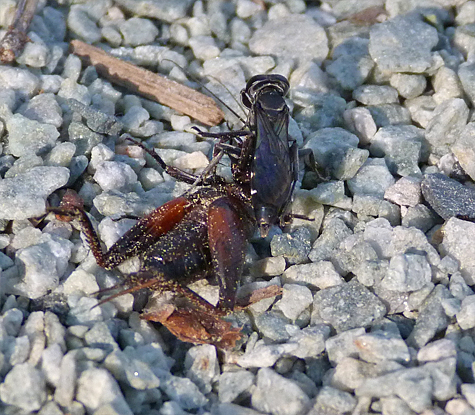A dragonfly.

Although I saw what I think was a Common Baskettail (Epitheca cynosura) last week, and definitely saw one on Friday (3/23), Common Green Darners are still the dragonfly you’re most likely to see cruising over the Wetlands at this time.
A wasp.

The above wasp was spotted as it was dragging the cricket across the farmyard at the end of the day. I didn’t quite know which wasp it was at the time, but simply calling it a cricket wasp based on the fact that it was hauling a cricket around with it was not a bad call (I initially thought it was carrying a spider until Ranger Ro corrected me, and I put on my glasses).
After a little research I can still safely call it a cricket wasp, but now it can be placed within the genus Liris since its prey appears to be a field cricket and not a mole cricket or camel cricket. Wasps in the genus of Liris prey only upon field crickets.
Solitary wasps such as the cricket wasp above often specialize on certain prey in which to stock their burrows. Once a burrow is dug into the soil, preferably sandy soil, and stocked with the paralyzed prey of choice, eggs are deposited within the nest, often into or on the prey item itself. When the eggs hatch the larvae feed upon the prey, pupate and then emerge as adults. Depending on the species, they may overwinter underground as pupae.
great pic of darner!
Thanks, Larry!